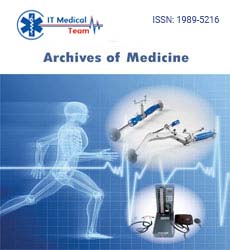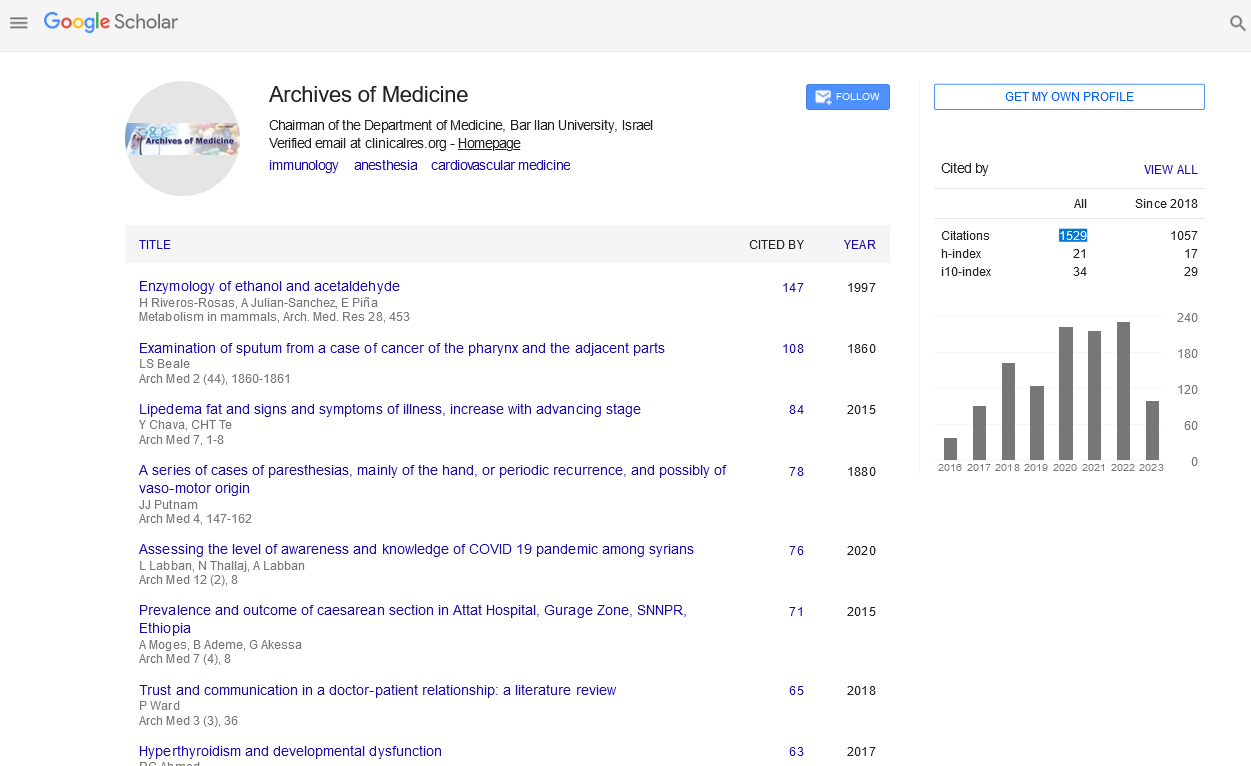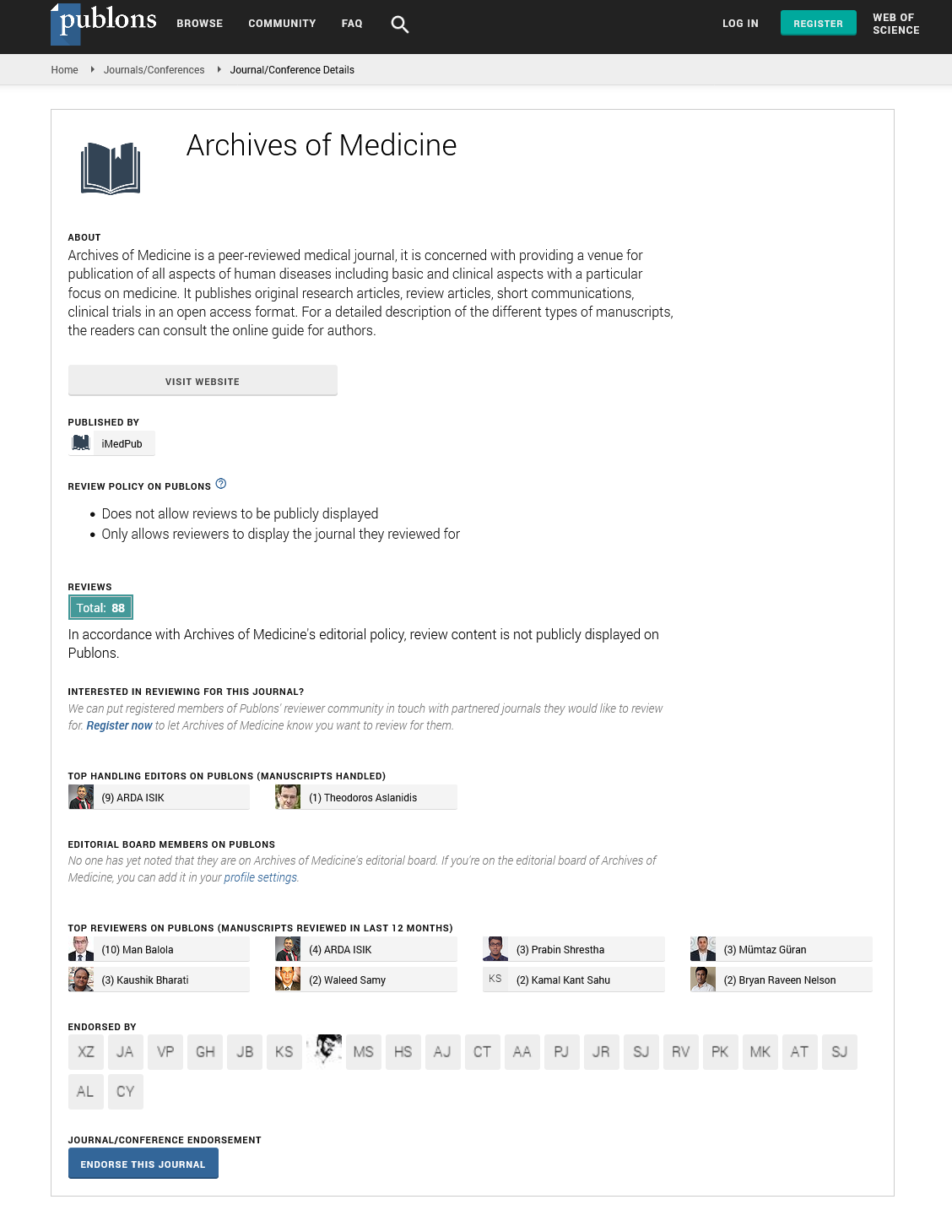Research Article - (2022) Volume 14, Issue 1
Assessment Intermittent Dosing of Antibiotics: IV Infusion or IV Push? The Impact of Administration Technique on Dose Delivered, Nursing Practice and Hospital Budget
Missiaen L1*,
De Schoenmakere G2,
Valcke L3 and
Decroix N3
1Department of Pharmacy, AZ Delta, Roeselare, Belgium
2Department of Nephrology, AZ Delta, Roeselare, Belgium
3Department of Nursing, AZ Delta, Roeselare, Belgium
*Correspondence:
Missiaen L, Department of Pharmacy,
AZ Delta vzw, Deltalaan 1, 8800 Roeselare,
Belgium,
Tel: +003251236117,
Email:
Received: 28-Dec-2021, Manuscript No. ipaom-21-12211;
Editor assigned: 05-Jan-2022, Pre QC No. P-12211;
Reviewed: 17-Feb-2022, QC No. Q-12211;
Revised: 26-May-2022, Manuscript No. ipaom-21-12211;
Published:
27-Jan-2022
Abstract
Purpose: Hospitalised patients are often treated with Intravenous (IV) antibiotics due to their critical illnes or inability to swallow oral medication. Intravenous therapy can be achieved by intermittent IV infusion, IV push administration or continuous infusion regimens. Tubing residuals impact the administration of adequate drug doses. We evaluated whether IV push injection is superior to intermittent IV infusion for antibiotics in a theoretical model. Based on these findings we describe the implementation of this administration protocol in a large size non-university hospital (1.403 beds) in Belgium, with its benefits and disadvantages.
Methods: All Antibiotics on the formulary of the hospital were evaluated for their aptness to be administered by slow IV push injection. The nursing practice of the two administration techniques was analysed on a pilot ward. The financial impact was also briefly considered, with emphasis on the materials used.
Results: For the intermittent infusion technique the tubing residual was 12 mL, resulting in a net loss of 24% per dose. For the IV push technique, there was no residual volume as the syringe is connected directly the injection site of the patient. Practice on the pilot ward showed that less intervention were needed with IV push administration as compared to intermittent infusion, resulting in time saving for the nurse.
Conclusion: The IV push administration is the technique of choice, is time-saving and results in cost reduction. The implementation of this protocol has to be well prepared, supervised and guided but is relatively easy.
Keywords
Intravenous; Antibiotics; IV push administration; Hospital; Antibiotic
stewardship; Dead volume
Introduction
Administration of a correct dose of antibiotics is pivotal in the
adequate treatment of life-threatening infections [1]. Depending
on the antibiotic class, both the time above the minimal
inhibitory concentration of the antibiotic (MIC) or the peak
concentration of the antibiotic, can be influenced by the posology
of the prescribed antibiotic treatment [2]. Thus inadequate dosing
can lead to treatment failure or unwanted toxicity, and on a
community level to selection of resistant strains [3]. Hospitalised patients are often treated with Intravenous (IV) antibiotics, because
of their critical illness or the inability to swallow oral medication.
Intravenous therapy can be achieved by intermittent IV infusion,
IV push administration or continuous infusion regimens [4].
It has been demonstrated that tubing residuals impact the
administration of adequate drug doses [5]. We evaluated whether
slow IV push injection is superior to intermittent IV infusion for
antibiotics in a theoretical model. Based on these findings we
describe the implementation process of this administration
protocol in a large size non-university hospital (1.403 beds) in
Belgium, with its benefits and disadvantages.
Materials and Methods
The intermittent infusion system for antibiotics used in our
hospital (AZ Delta hospital, Roeselare, Belgium) consists of a side
infusion with the antibiotic agent to be administered dissolved
in 50 mL of fluid (preferably saline 0.9%), connected to the
main infusion system with an Intrafix® SafeSet (B. Braun,
Melsungen, Germany). Baxter (Braine l’Alleud, Germany) viaflo
50 mL saline 0.9% is preferably used to dilute the antibiotic
agent (commonly manufactured as freeze-dried powder vial) for
intermittent infusion.
For IV push injection, the antibiotics are dissolved in the smallest
amount of aqua for injection (10 or 20 mL) and administered in
a syringe, directly connected to a side port of the main infusion
system. This side port is flushed with saline 0.9% (10 mL) before
and after bolus injection.
For time-controlled infusion, a syringe with the drug solution is
placed in an automated infusion pump and connected to the
main infusion system using a 1 × 3 mm, LL M/F 200 cm infusion
pump extension (Dialex Biomedica, Bilzen, Belgium).
All Antibiotics on the formulary of the hospital were evaluated for
their aptness (based on the package leaflet or clinical expertise)
to be administered by slow IV push injection. The following
antibiotics can be administered in IV push injection in our hospital:
amoxicillin, amoxicillin/clavulanic acid, aztreonam, cephazoline,
cefepim, ceftazidim, ceftriaxon, flucloxacillin, meropenem,
penicillin G and temocillin. Piperacillin-tazobactam, vancomycin,
clarithromycin, clindamycin, cotrimoxazole, aminoglycosides
and quinolones were excluded from this technique.
An analysis of the nursing practice was performed per
administration moment for the two techniques under
examination. Furthermore the financial impact of this was also
briefly considered, with emphasis on the materials used.
Results
Residual volume calculation and impact on net
dose administered
For the intermittent infusion system the total residual solution
present in the infusion system was 20 mL in a clinical setting [6] (air chamber, tubing and flask); after forced evacuation of the air
chamber (actually not safe in a clinical setting but frequently
used practice) this still was 12 mL. This was measured in an in
vitro test environment.
For the slow IV push technique, there was no residual volume as
the syringe is connected directly to the 3-way tap of the infusion
system, after injection de side port is flushed by saline 0.9% (10
mL). For time-controlled infusion system the residual volume was
1.25 mL. Table 1 summarizes some standard treatment regimens
and the impact of the administration system on the actual dose
administered.
| Antibiotic |
Dose (mg) |
Volume for Infusion (mL) |
Frequency (times/day) |
Concentration (mg/ml) |
Minimum Residual dose (ml) |
Net Dose Administered |
Net Daily Dose (mg) |
Theoretical Daily Dose (mg) |
Minimum Loss (%) |
| Amoxicillin |
1000 |
50 |
4 |
20 |
12 |
760 |
3040 |
4000 |
24 |
| Amoxicillin/Clavulanic acid |
1000 |
50 |
4 |
20 |
12 |
760 |
3040 |
4000 |
24 |
| Cefepim |
1000 |
50 |
4 |
20 |
12 |
760 |
3040 |
4000 |
24 |
| Ceftriaxon |
2000 |
50 |
1 |
40 |
12 |
1520 |
1520 |
2000 |
24 |
| Ceftazidim |
2000 |
50 |
3 |
40 |
12 |
1520 |
3040 |
4000 |
24 |
| Flucloxacillin |
1000 |
50 |
6 |
20 |
12 |
760 |
4560 |
6000 |
24 |
| Meropenem |
2000 |
100 |
3 |
20 |
12 |
1760 |
5280 |
6000 |
12 |
| Penicillin G |
1000 |
50 |
6 |
20 |
12 |
760 |
4560 |
6000 |
24 |
| Temocillin |
2000 |
50 |
2 |
40 |
12 |
1520 |
3040 |
4000 |
24 |
Table 1 Data on net medication loss of selected antibiotics based on in the vitro test procedure.
Changes to the work flow
Based on the theoretical calculations of net dose loss of the
antibiotics considered, a change in practice was made with
the emphasis on IV push injection. The nephrology ward was
selected as pilot ward, based experience with vascular access.
Clear instructions were developed by the hospital clinical
pharmacists and the vascular access nurse for the slow IV
push administration: A video with the procedure was developed
and made accessible through YouTube [7] and summary of the
technique on a poster with listing of the different antibiotics,
do’s and don’ts. Practice in this ward showed that, although
a 3 minute presence bedside was required to perform, less
interventions were needed as compared to the intermittent
infusion technique (installing side infusion, stopping side
infusion) resulting in time saving for the nurse. In our hospital,
the material cost saving for slow bolus administration vs.
intermittent infusion was calculated at 105.928 EUR per year.
Discussion
As could be demonstrated the standard side infusion technique
for intermittent infusion (common practice in most hospitals)
resulted in a minimum loss of net daily dose administered of
24% (for meropenem there is a minimum loss of 12% due to
the bigger solution fluid). This can have a considerable impact
on the peak levels of the antibiotics, as well as on the time above
MIC- depending on the antibiotic class the surrogate for efficacy.
Plagge H, et al. [8] found similar results for the percentage of
medication loss and adapted the protocol for infusion at the University Hospital of Basel by increasing the volume of
solution (100 mL), thus diluting the injected fluid and decreasing
the loss. However, some restrictions apply: if medication has to
be administered several times a day, this can generate a strongly
positive fluid balance, which may not be desired. It can be
applicable for dosing regimens of once daily administrations.
In line with these findings, Cooper DM, et al. [9] advocated the
flushing of intravenous lines, rather than diluting the solution
to tackle this dose loss. This however is not without risk for the
patient, as more manipulations are necessary.
Another possibility is the administration of the antibiotic using
time-guided infusion pumps. The dead space in this system is
considerable lower (1.25 mL in a 2 m tubing), and can be still
reduced using shorter tubing. However, the cost of infusion
pumps for a hospital wide implementation is high and not
applicable in each hospital.
Conclusion
We advocate the use of slow IV push technique, where the
antibiotic is diluted in a syringe with 10 or 20 mL aqua for injection
and administered as a slow bolus over 3-5 minutes bedside by
the nurse. There are several advantages to this administration
technique: cost-effectiveness as expensive side bags and
connectors are no longer needed and there is no need for
expensive infusion pumps, 100% bioavailability of the dose
prescribed as this system has no dead space, and local reactions
can be monitored directly. Is also helps to improve the nursepatient
interaction during the 5 minute administration.
The slow infusion technique is not to be used if it is not
compatible with the manufacturer’s instructions: this is the
case for vancomycin (red man syndrome), co-trimoxazol,
piperacillin-tazobactam, clarithromycin and clindamycin.
Quinolones, aminoglycosides and linezolid are not
manufactured as freeze-dried powders but in solutions of +100
mL in Belgium, thus not compatible for IV push administration.
In AZ Delta, this technique was implemented on the nephrology
ward for 3 months in a test phase: local reactions were
uncommon (2 cases on flucloxacillin) and were not severe; nurses
reported more ease of use than the intermittent infusion
technique. After this test period the IV push injection protocol
was implemented hospital-wide, supported by teaching protocols
for the nurses provided by our clinical pharmacist and nurse
specialist for vascular access. The prescription module in
the electronic patient file was adapted to this new administration
mode. The whole transition process was finalized in 9 months.
The IV push administration technique for selected antibiotics is
the technique of choice as it delivers the dose of antibiotics
as prescribed, is time-saving for the nurse and results in
considerable cost reduction for materials used (more than
100.000 EUR per year in our 1.403 bed Hospital). The
implementation of this protocol has to be well prepared, guided
and supervised but is relatively easy.
Acknowlegement
The authors wish to thank the nurses involved in the pilot project
for their input and feedback. The authors wish to acknowledge
the efforts of Dr. W. Stockman (1966-2019) as the initiator of this
project in AZ Delta.
Declarations
Funding was not applicable.
• There were no conflicts of interest.
• Ethics approval was not applicable in this project.
REFERENCES
- Lindberg O, De Geer L, Chew MS (2020) Nonadherence to antibiotic guidelines in patients admitted to ICU with sepsis is associated with increased mortality: A registry-based, retrospective cohort study. Eur J Anaesthesiol 37: 113-120.
Google Scholar, Crossref
- Eyler RF, Shvets K (2019) Clinical pharmacology of antibiotics. Clin J Am Soc Nephrol 14: 1080-1090.
Google Scholar, Crossref
- Cazzola M, Matera MG, Noschese P (2000) Parenteral antibiotic therapy in the treatment of lower respiratory tract infections. Strategies to minimize the development of antibiotic resistance. Pulm Pharmacol Ther 13: 249-256.
Google Scholar, Crossref
- LeBel M, Spino M (1988) Pulse dosing vs. continuous infusion of antibiotics. Pharmacokinetic-pharmacodynamic considerations. Clin Pharmacokinet 14: 71-95.
Google Scholar, Crossref
- Lam WJ, Bhowmick T, Gross A, Vanschooneveld TC, Weinstein MP (2013) Using higher doses to compensate for tubing residuals in extended-infusion piperacillin-tazobactam. Ann Pharmacother 47: 886-891.
Google Scholar, Crossref
- Claus B, Buyle F, Vogelaers D (2010) Importance of Infusion volume and pump characteristics in extended administration of betalactam antibiotics. Antimicrobial agents and chemotherapy 54: 4950.
Google Scholar, Crossref
- https://www.youtube.com/watch?v=rLR1OFr0ndY&feature=youtu.be
- Plagge H, Golmick J, Bornad D, Dauster S. Evaluation of the dead volume in intravenous short- term infusion. EJHP Sci 16: 31-37.
Google Scholar
- Cooper DM, Rassam T, Mellor A (2018) Non-flushing of IV administration sets: An under-recognised under-dosing risk. Br J Nurs 27: S4-S12.
Google Scholar, Crossref
Citation: Missiaen L, De Schoenmakere G, Valcke L and Decroix N (2021) Intermittent Dosing of Antibiotics: IV Infusion or IV Push? The Impact of Administration Technique on Dose Delivered, Nursing Practice and Hospital Budget. Arch Med Vol. 14 No. 1:2






